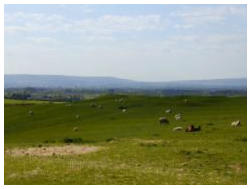


In 1999, as the whole world approached a new millennium with ever increasing excitement,
many villages looked to ways in which they could mark the event, Aston Abbotts was no
exception and an Aston Abbotts History Group was formed with the express purpose of creating
a written record of the growth of Aston Abbotts and its community.
A great deal of research, a lot of hard work, a grant from the Heritage Lottery Fund and
sponsorship from villagers resulted in an excellent book 'Aston Abbotts 1000-2000, A Village
History'. Its 115 A4 pages paint a vivid picture of life and changing times within Aston Abbotts
and it is gratefully and freely acknowledged as the main information source from which this
History section of the website was constructed. This book is now BACK IN PRINT in 2016, in a
limited run in aid of the Village Hall improvement funds. Some copies may still be available and
cost £10 plus postage outside the local area. They are available from Caroline Lane, 01296
681373 or email astonabbottsvillagehall@yahoo.com


The name Aston Abbotts came about in the eleventh century. At that
time two distinct communities existed: Eastun or East Tun (a 'tun' is a
settlement), roughly at the location of the present village and an
earlier settlement at Bricstochr (latterly Burston) at the bottom of
Lines Hill. Tolf, a Danish chief who held the village at that time, gave
his land to the Holy Church of Alban the Martyr (St Albans) in an effort
to ingratiate himself and earn the right to be buried there. Thus the
village became Aston (or Eastun) Abbotts, to distinguish itself from
Aston Clinton and the other Astons.
By the time the Domesday Book was compiled at the direction of
William the Conqueror in 1086 the Abbott of St Albans owned about
1200 acres at Aston Abbotts. The survey reported six villagers, with
twelve smallholders having six ploughs between them, one slave and
pasture for three plough teams.
The next few hundred years passed apparently without Aston Abbotts
attracting much attention and there are few mentions of it in official
records.
There are accounts of a mill existing at Burston in Windmill Fields
by the end of the sixteenth century. Aston Abbotts location on a hill
would have made it an ideal position, but any physical trace of the
mill has long since disappeared.
Aston Abbotts remained the property of the Abbott of St Albans
until the dissolution of the monasteries in 1539. The manor then
passed into the hands of lord Russell, who sold it to Sir William
Dormer in 1553. The manor then went through the hands of Sir
William Stanhope and onto the Earls of Chesterfield, who sold it to
Lord Overstone. It was Lord Overstone who was responsible for
overseeing much of the rebuilding of Aston Abbotts that took place
in the mid-nineteenth century. Lady Wantage inherited the estate
after the death of Lord Overstone (her father) and, in 1919, sold off
the land to and some houses to the sitting tenants. So it was less
than 100 years ago when ownership of the land around Aston
Abbotts finally passed into the hands of the private individuals who
lived, and in many cases worked, upon it.



- Photos
- Aston Abbotts - Winter Pictures
- Aston Abbotts How It Was
- Villagers Pictures - General
- Villagers Pictures - Ken Rhodie
- 630 Club Bean Competition 2011
- Astonbury X 2011 - Page 1
- Astonbury X 2011 - Page 2
- Astonbury X 2011 - Page 3
- Vic Scott Memorial Orchard
- Christmas Lunch 2011
- Peter Kent's Photographs
- Jubilee Picnic 2012
- Village Orchard - One Year On
- Village Orchard - Autum 2012 Planting
- Astonbury 2012
- Videos
- Interviews













